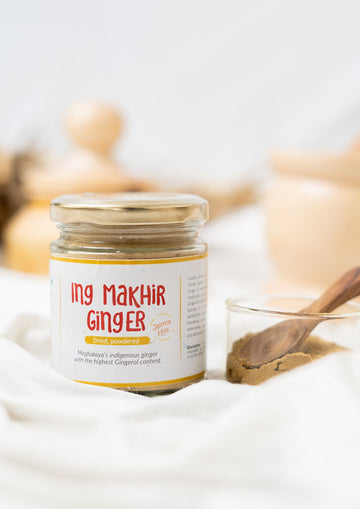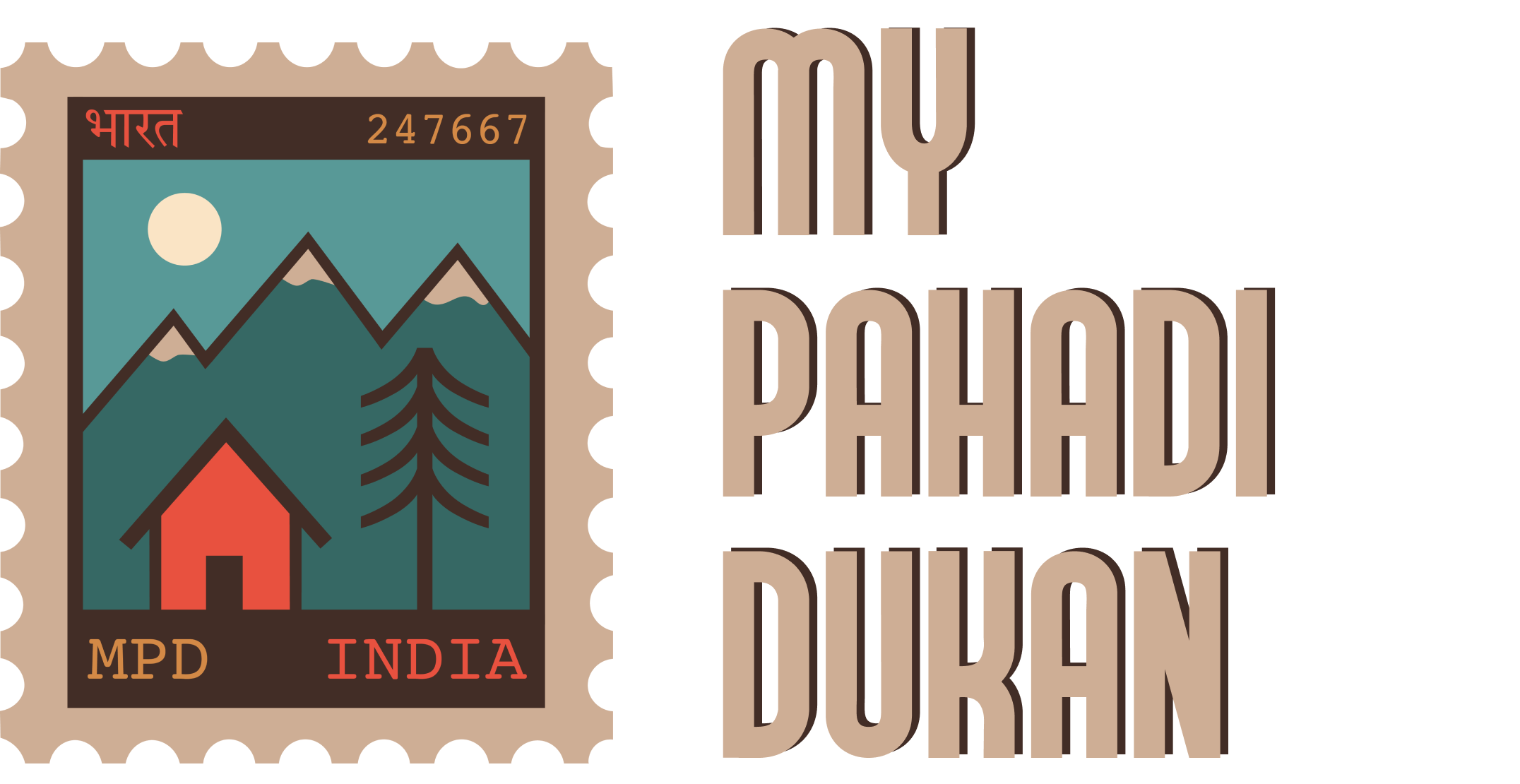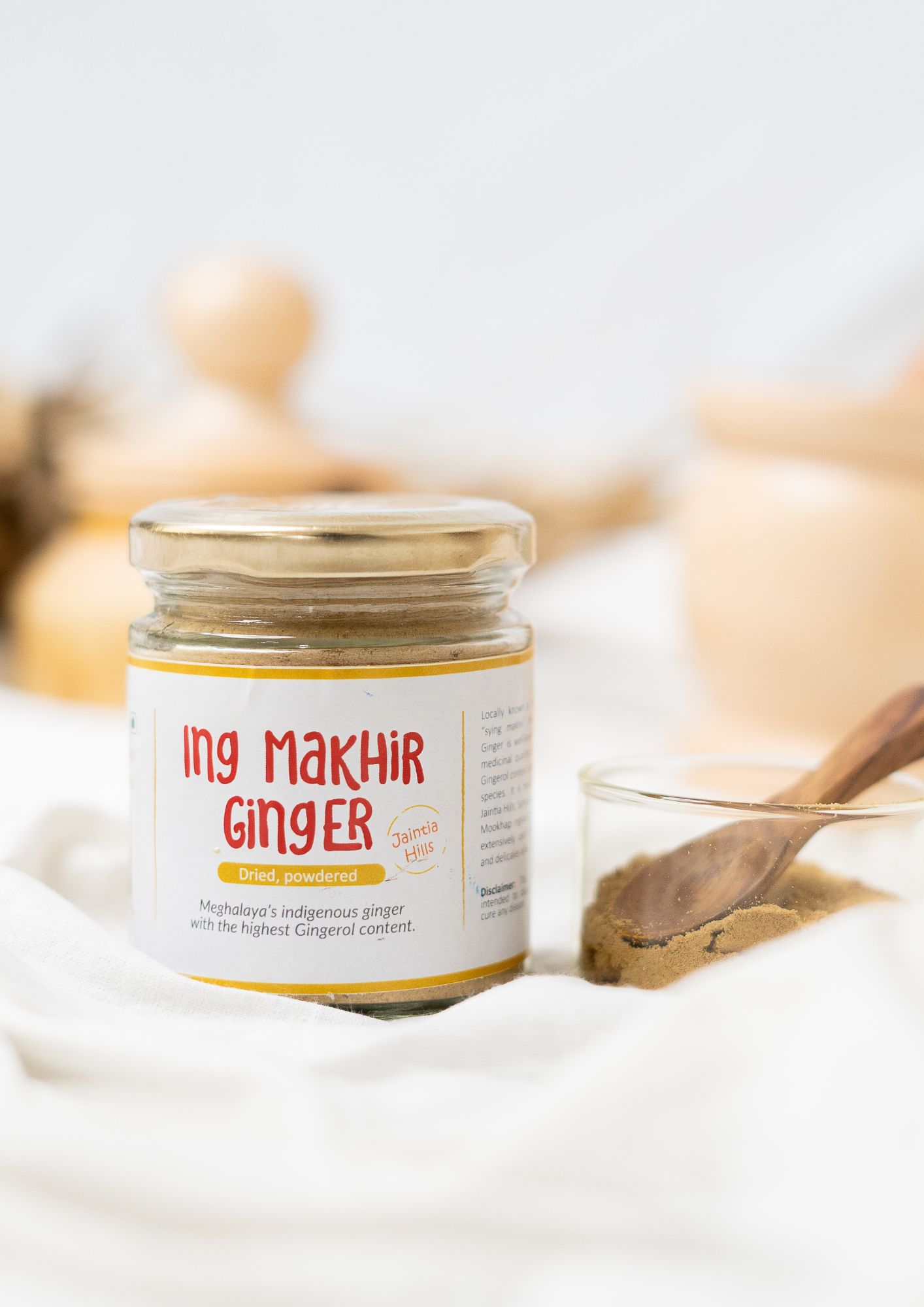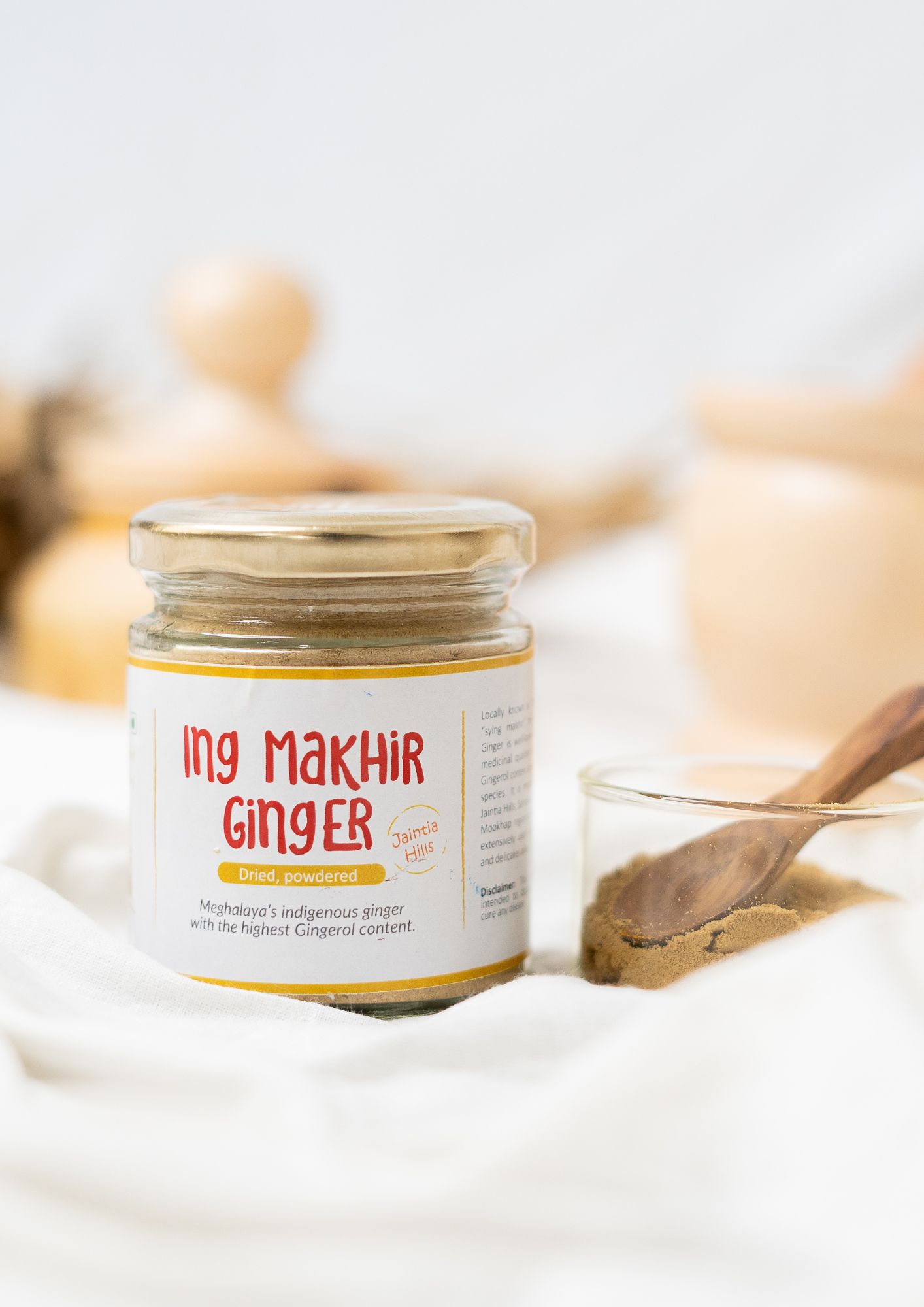Ing Makhir Ginger 100gms (Highest Gingerol content) | Maati
Vendor: Maati
Locally known as “Ing Makhir” or “Sying Makhir”, this variety of ginger is well known for its potent medicinal qualities and the highest Gingerol content among other ginger species. It is mostly grown in the Jaintia Hills, Sahsniang, Khatkasla and Mookhap Regions of Meghalaya and is extensively used in local remedies and delicacies alike.
What is Ing Makhir Ginger?
Ing Makhir Ginger is a rare variety from Meghalaya, India. It is also known as “Sying Makhir” in local dialects. This ginger is special because it has the highest Gingerol content among all ginger types.
It has a warm, sweet aroma and a rich, bold taste. The flavor is strong but not overpowering. People use it in both cooking and traditional medicine.
Ing Makhir is grown by indigenous farmers using natural methods. It is one of the few heirloom gingers still grown in India. This ginger is not just healthy—it’s a way to support local communities and sustainable farming.
Benefits of Ing Makhir Ginger
1. High Medicinal Potency
Contains significantly higher levels of Gingerol and Zingiberene, offering powerful anti-inflammatory, antioxidant, and antimicrobial benefits.
2. Supports Digestive & Respiratory Health
Traditionally used to soothe digestion, relieve nausea, and ease respiratory ailments, making it a staple in natural remedies.
3. Heirloom Variety with Superior Flavor
Unlike regular ginger, Ing Makhir features a naturally sweet aroma, rich warmth, and complex flavor, ideal for culinary and therapeutic uses.
4. Sustainably Grown by Indigenous Farmers
Cultivated using chemical-free, traditional farming methods in Meghalaya’s Jaintia Hills, preserving local biodiversity and community knowledge.
5. Rare and Nutrient-Rich
As one of the last remaining indigenous varieties of ginger in India, it stands out for its nutritional richness and purity, untouched by modern hybridization.
When you shop from communities like Maati
- You enjoy fresh produce grown with pride and care by farmers who appreciate the opportunity to grow food in a sustainable environment without adding any harmful chemicals.
- Your support leads to higher income for farmers and tribals and enables the development of business and entrepreneurship skills in rural communities.
Note – The price of this product includes shipping charges of Rs 80.
FAQs
1. What is Ing Makhir Ginger and why is it special?
Ing Makhir Ginger, also known as Sying Makhir, is a rare variety from Meghalaya known for its highest Gingerol content, making it highly potent for medicinal use.
2. Where is this ginger grown?
It is sustainably cultivated in the Jaintia Hills region of Meghalaya, including areas like Sahsniang, Khatkasla, and Mookhap.
3. What are the health benefits of Ing Makhir Ginger?
It is valued for its strong anti-inflammatory and digestive properties, and is often used in traditional remedies for colds, pain relief, and digestion.
4. Is this ginger organic or chemical-free?
Yes, it is grown without harmful chemicals by local farmers using sustainable and traditional farming methods.
5. Does the price include shipping?
Yes, the listed price includes ₹80 for shipping charges.
6. What does Ing Makhir Ginger taste like?
It has a naturally sweet, warm, and mildly spicy flavor, with a more complex aroma than regular ginger, making it ideal for culinary and medicinal use.
7. Is Ing Makhir Ginger an heirloom variety?
Yes, it is a rare heirloom ginger still cultivated by indigenous farmers. Most other native varieties were abandoned due to lower yields, but Ing Makhir survives for its powerful health benefits and rich flavor.
8. Can I grow Ing Makhir Ginger at home?
Yes! It grows in similar conditions as regular ginger. Plant rhizomes in compost-enriched soil between March and June for best results. Raised beds or well-drained pots are ideal.
9. Which is the most ginger producing state in India?
Assam is currently the most ginger producing state in India, followed closely by Meghalaya, where rare and potent varieties like Ing Makhir Ginger are traditionally grown by indigenous communities.





